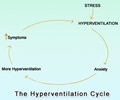Researchers at the Monash University in Melbourne, Australia, have found that children with disordered breathing in sleep have elevated blood pressure.
The study is the first to use continuous measurements of blood pressure during overnight sleep.The team found that all severities of sleep-related breathing disorders (SRBD) in children are associated with elevated blood pressure during sleep compared with non-snoring control children.
The study, authored by Rosemary Horne, PhD, of Monash University in Melbourne, Australia, focused on 88 children between seven and 13 years of age, including 68 referred for the assessment of SRBD and 20 non-snoring controls.
Routine polysomnography, or an overnight sleep test, was performed, and mean arterial pressure was continuously recorded. Children were divided into groups according to obstructive apnea/hypopnea index: control children, primary snoring, mild obstructive sleep apnea (OSA) and moderate/severe OSA.
According to the results, compared with the non-snoring controls, SRBDs of any severity elevate the blood pressure of children during sleep.
"SRBDs are very common in children, occurring in up to 30 percent of children. SRBD ranges in severity from primary snoring to OSA," said Dr. Horne.
Advertisement
Snoring is a sound made in the upper airway of your throat as you sleep. It normally occurs as you breathe in air. It is a sign that your airway is being partially blocked.
Advertisement
The study was presented at SLEEP 2008, the 22nd Annual Meeting of the Associated Professional Sleep Societies (APSS).
Source-ANI
SRM











